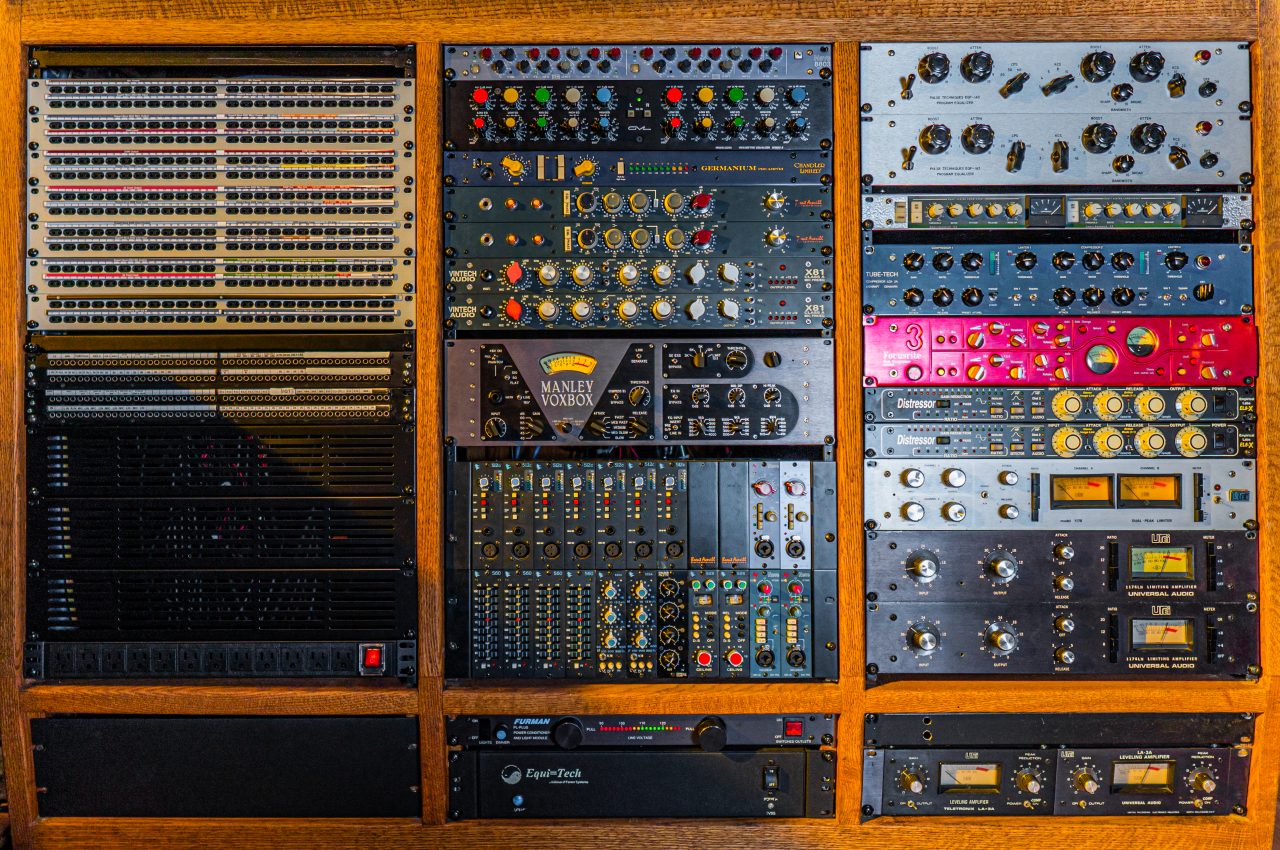Welcome back to the final part in our series on Outboard Gear in STUDIO A. As I have already mentioned, STUDIO A has incredible outboard gear, and in this post we’re going to look at some of the preamplifiers and equalizer units we have ready at our clients disposal. Specifically, the Vintech X81 Preamp and EQ, the Chandler Limited Germanium Preamp, and the Manley Voxbox.
First, let’s briefly cover what a Preamplifier and EQ does. A preamplifier is basically just a gain control. It takes a weak signal, like the signal from a microphone, and boosts the signal to reach line-level. So, for you home-studio folks out there, a small audio interface like a focusrite scarlett is your preamplifier. Some preamps will have an EQ attached, which allows you to boost or cut frequencies that may be affecting your signal before your signal is recorded. And with that very brief explanation, let’s look at some of the outboard preamplifiers we have in the studio.
Vintech X81 Microphone Preamp & EQ

First up, the Vintech X81. This unit is a Class-A* mic preamp based on the classic Neve 1073. It has a four band EQ, a high and low shelf, two peak settings for low mids and high mids, and an additional high pass filter. The X81 also comes with a ¼ inch instrument jack so you can plug in your guitar or bass directly into the unit, but it’s important to remember that the unit is active. The X81’s sound is similar to the 1073, but it’s known for being “cleaner” for a more modern sound.
*You might be asking what is a class-a mic pre? A Class-A amplifier basically means that it produces the whole audio signal. There is also a class-b amplifier, which only produces either the top or bottom of an audio signal.
Chandler Limited Germanium Preamp

Next, is the Chandler Limited Germanium Preamp. The Germanium is another in a series of success stories by Chandler Limited. The Preamp’s key feature is that instead of using traditional silicon transistors, they use germanium, which is typically used in guitar overdrive pedals. Germanium transistors were the basis for the early designs by Telefunken, Neve, and EMI outboard gear. This Chandler pre is known for its smooth, round, and organic tone. Most preamps will have a brittle sounding distortion, but the Chandler distortion is pleasant to the ear.
The second key feature for this unit is the Feedback knob. There are two knobs, the gain knob and the feedback knob, and they work together to create a great sound. Dialing in the feedback knob adds more gain, more distortion, more bass, and less treble. Needless to say, this preamp is not designed for a clean tone, it’s designed to add character.
Manley Voxbox Channel Strip

The Manley Voxbox, is less a preamp and more a dedicated channel strip. As the name suggests, the Voxbox was built to be a one-stop-shop for your vocal tone, but it’s a great sounding tube preamplifier that you can use on virtually any instrument. Designed with Manley’s acclaimed mono preamplifier, offering tons of headroom and a Class A vacuum tube tone.
The rest of the Voxbox’s features include a compressor, a three-band EQ, a de-esser/limiter, and the option to stereo link it to another unit. The compressor models their optical compressor, the ELOP, to create a smooth compression that begins compressing your signal before going through the tube, preventing mic pre-clipping. The EQ section is modeled after the famous Pultec EQ, but the Voxbox expanded it to include 33 different frequency settings in three bands. Finally, the de-esser and limiter section. The De-esser has four carefully chosen bands ranging from 3KHz to 12KHz, and the fifth knob position enables a 10:1 limiter which is based off the ubiquitous LA-2A, this allows you to compress before the EQ and then limit after the EQ.
In the sessions I’ve sat in on, I’ve been able to see this gear in use countless times, and every time I’m surprised by the tone we’ve gotten. It is really special to get to see these world class engineers utilizing this gear, seeing the way they work, and attempting to hear what their highly-trained ears are hearing. I can’t wait to sit in on another session to hear them in use again.
Written by Kyle Dean

